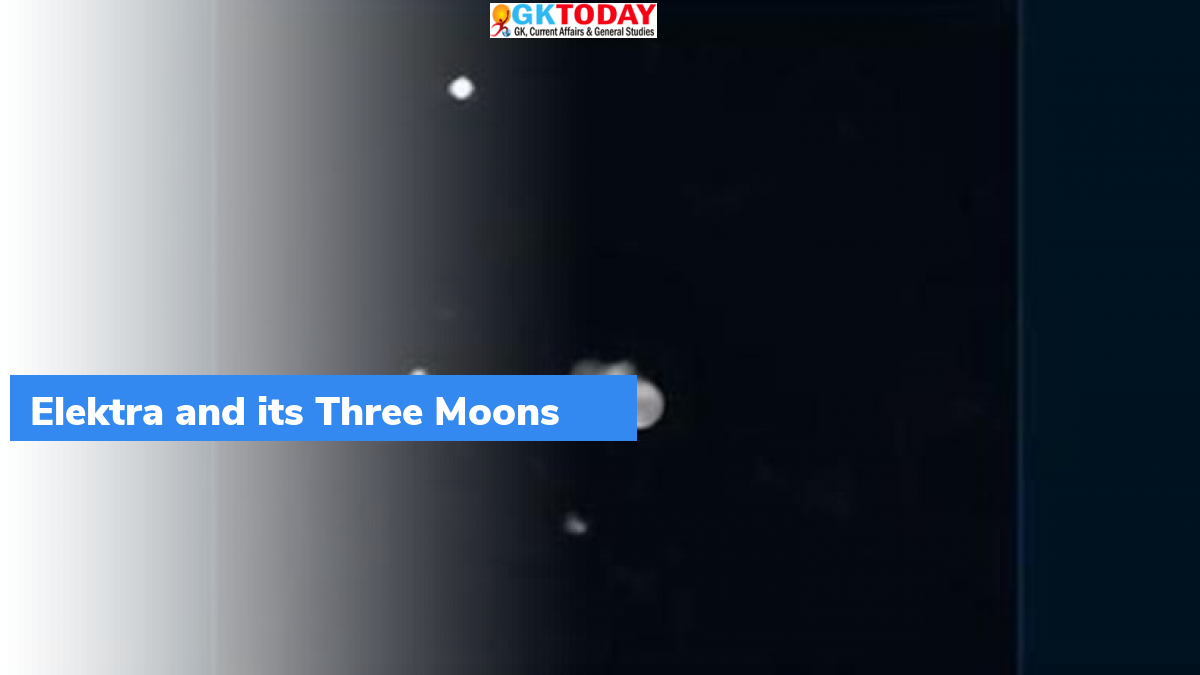New Asteroid with Three Moons
Astronomers have recently discovered 3 bodies orbiting Elektra asteroid system, making it the 1st quadruple asteroid system. Previously only two outer moons were known. New moon was discovered recently.
About Elektra
- Elektra is having a 5.5-year-long orbit, with a width of 200 kilometres.
- It is not gigantic as per asteroid standards, but large enough.
- It was discovered on February 17, 1873, by astronomer Christian Peters. It has been named after Electra, an avenger in Greek mythology.
- The first moon of Elektra was discovered in 2003 while second moon was discovered in 2014.
- Discovery of the second moon did not create any waves, as the other asteroid Sylvia had already been found to have two moons nine years before.
Discovery of third moon
A team of researchers from NARIT, reanalysed the data acquired three days after the discovery of second moon. During this, presence of the third moonlet was discovered. The third moon has been provisionally named S/2014 (130) 2.
The first moon-S/2003 (130) 1
It measures 6 kilometres in diameter. The moon orbits Elektra at a distance of around 1300 kilometres. Despite being in a close orbit, it is orbiting at a distance making it easier to spot. Sizes of the second and third satellites are comparable respectively at 2.0 and 1.6 kilometres wide.
Why it took so long to discover the third moon?
Second moonlet was discovered instantly from 2014 data. Third and second moon had similar dimensions. The third moon orbits even closer to Elektra, at 344 kilometres. But it is 15,000 times fainter than the asteroid it orbits. As a result, its light is readily lost in brightness of Elektra. Furthermore, the third satellite is so close to Elektra that irregularities in parent body’s shape distort its already eccentric orbit.
Why have Elektra three moons?
Asteroid moons are sometimes formed, when collisions break off chunks of the parent body. The broken part never gets far enough to escape its gravity. This is likely what happened with the second and third moon because, both of these moons have overlapping orbits and similar spectra as well as composition.
Month: Current Affairs - February, 2022
Category: Science & Technology Current Affairs


